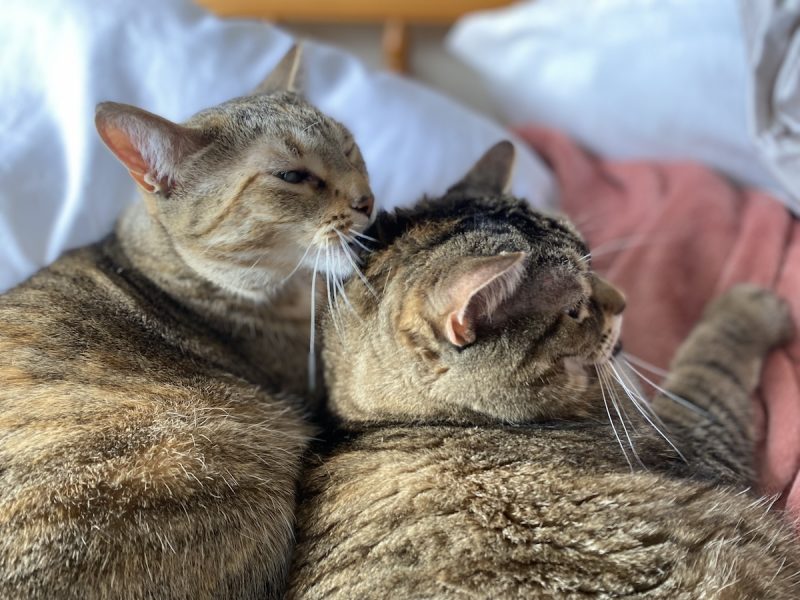
I caught Pancake in the middle of a dramatic grooming session last night. It involved lots of splayed legs, and a determined effort to reach something near her perineum, that actually entailed what I’m pretty sure was an inverted split. Earlier in the week, I’d watched a similarly determined grooming session play out- this time with Tiller making a valiant effort to groom Pancake into sporting a Mohawk. Luckily, “The Pancake” who is a bit Al Pacino Godfather-esque about the bed and sharing it with other cats, tolerated the session well and no blows ensued.
If eating and sleeping are two of the most common activities I see both cats engaged in, then grooming is probably a close third. Multiple times daily, after eating, and definitely before sleeping, sometimes at 3:00 am between their various sleep modes, they groom. But just why do cats love grooming so much?
Why Cats Groom: Speculation and Theories
Cats have always been considered fairly clean animals, due to their inherent grooming tendencies. Here are some theories as to why cats groom:
- The idea that groomers are placed socially higher than groomees. And furthermore, that grooming is a way in social settings to allow cats to act out on aggression issues, without the need for overt violence. This theory comes from a slightly older paper, but interesting nonetheless…
- A newer paper on a similar topic found that familiarity and genetic relations improved grooming activities from one cat to another. Again suggesting a social or bonding function.
- Function. To remove external parasites, such as fleas. In one study, grooming activity helped to significantly decrease the numbers of fleas, compared to control cats who wore e-collars and could not groom for the study period. Other theories have proposed the removal of odors, such as after eating, to reduce the risk of being predated.
- It’s worth noting that grooming can (unintentionally?) spread anal gland secretions on the haircoat. The anal glands contain extremely high quantities of Fel d 1, one of the main feline allergens that contribute to human cat allergies.
- Don’t forget that grooming can also indicate abnormalities, as well. Flea allergy dermatitis, for instance, can result in large quantities of grooming. So can Feline Hyperesthesia Syndrome. And urinary tract infections or urinary crystals can lead to localized, excessive grooming of the perineum.
So, next time you catch your cat in a grooming session, consider for a moment if there may be more occurring than meets the eye. It could be a simple lick, relieving an itch, removing an external parasite, or adhering to social structure. But needless to say, cats, as always, are never quite as simple as they may first appear!